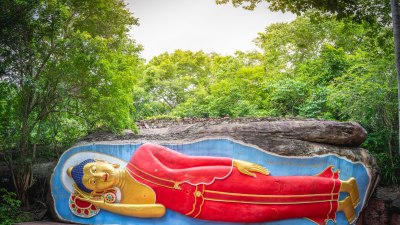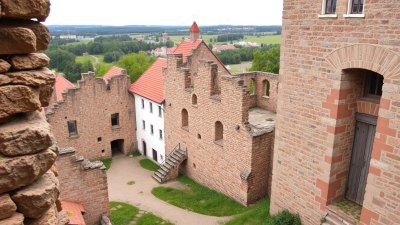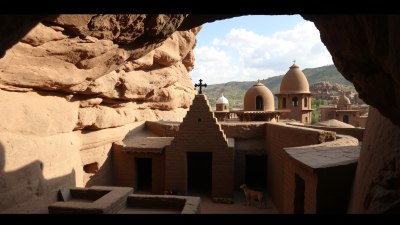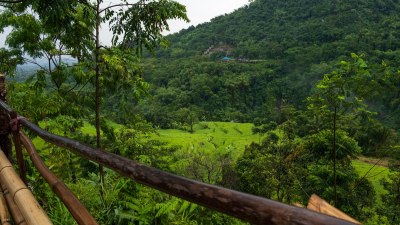Traces of Silence in Dambulla, Sri Lanka
Explore the serene beauty and historical significance of Dambulla's cave temples and surroundings.

Dambulla, a picturesque city situated in the heart of Sri Lanka, is renowned for its majestic cave temples, a UNESCO World Heritage site that houses an impressive collection of Buddhist art, statues, and murals. Known as the Dambulla Cave Temple, this remarkable site offers visitors a unique glimpse into the country’s rich cultural history and spiritual heritage. With its rock formations rising dramatically from the surrounding landscape, Dambulla stands out not only as a geographical landmark but also as a vital piece of Sri Lanka’s historical puzzle, captivating the souls of both locals and travelers alike.
The Dambulla Cave Temple complex consists of five major caves, each showcasing a myriad of intricate carvings and paintings that date back to the first century BCE. In these caves, visitors encounter over 150 Buddha statues, each distinct and telling a story rooted in Buddhist iconography. The most prominent of these caves is the Great Cave, which features a colossal reclining Buddha statue measuring an astonishing 14 meters in length. This statue symbolizes the Buddha’s passing into Nirvana, representing a significant aspect of Buddhist teachings and beliefs.
The Historical Context of Dambulla
The historical significance of Dambulla can be traced back to ancient kings, particularly during the Anuradhapura and Polonnaruwa periods. Legend has it that King Valagamba, who was dethroned, sought refuge in these caves during his exile. Upon reclaiming his throne, he dedicated the caves as a center for Buddhist worship, thus reinforcing the sanctuary's sacred essence. This historical anecdote adds to the allure of the site, as visitors tread the same paths once walked by kings and monks.
The Art and Architecture of the Caves
Architecturally, the Dambulla Cave Temple serves as an exceptional example of rock-cut architecture. The caves were not merely carved for worship; they are an embodiment of the artistry and craftsmanship of the time. As one moves through the complex, the artistic flourishes captured on the cave walls reveal a deep spiritual philosophy intertwined with everyday life during the era. Murals depicting the Jataka tales, which illustrate the previous lives of the Buddha, grace the ceilings and walls, bringing the stories to life in vibrant detail. The delicate brushwork and intricate designs hold historical significance, showcasing a blend of Western and Eastern influences.
Visiting Dambulla: A Spiritual Journey
Visitors to Dambulla are often mesmerized by the atmosphere within the caves. The hushed whispers, the faint scent of incense, and the flicker of candlelight all contribute to an ambient tranquility that invites reflection and introspection. The combination of spiritual and natural beauty makes Dambulla an ideal place for those seeking a moment of peace and silence away from the chaos of modern life. The experience begins as one ascends the steep stone steps winding up the rock face, flanked by lush greenery and stunning views of the surrounding landscape, that enhance the sense of journeying into a sacred space.
The Spiritual Significance of Silence
Silence in Dambulla transcends the mere absence of sound; it is in this silence that visitors find an opportunity for deeper understanding and connection. As they contemplate the teachings of Buddha surrounded by centuries-old art, the silence becomes a canvas for personal reflection. In Buddhism, silence is not simply about quietness; it embodies a profound state of mental peace and clarity, often referred to as “Noble Silence.” Dambulla embodies this philosophy, offering a spiritual environment where thoughts can be calmed and the mind can engage with the essence of Buddhist teachings. It encourages visitors to immerse themselves in silence, creating space for profound revelations and connections.
Nature's Embrace in Dambulla
Surrounding the Dambulla Cave Temple are lush jungles and serene ponds, serving as a fitting backdrop that enhances the reflective experience. The vibrant flora and fauna of the region are a reminder of the beauty of creation, amplifying the tranquility found within the caves. Wandering outside the caves, visitors can explore the nearby areas, such as the Matale district, rich in agricultural lands and spices. Nature itself becomes a part of the sacred experience, linking the spiritual with the earthly.
The Cultural Heritage of Dambulla
Furthermore, Dambulla is a reflection of Sri Lanka’s diverse culture, where ancient traditions coexist with modern practices. Festivals are celebrated with great enthusiasm, and the temple plays a significant role in the local community's cultural identity. Each year, thousands flock to the Dambulla Cave Temple to partake in religious rites and ceremonies, reflecting the enduring significance of this site to Buddhist culture. The interweaving of spiritual practice and community life illustrates how the caves have transcended mere historical relics to become living symbols of faith.
A Tranquil Journey
In conclusion, Dambulla offers more than just an extraordinary glimpse into Buddhist artistry and history; it invites visitors into a space of tranquility where silence reigns supreme. The Dambulla Cave Temple, with its vast collection of ancient artifacts, historical significance, and serene natural surroundings, serves as a testament to the spiritual journey that has been trodden for centuries. Whether one is drawn by history, spirituality, or sheer beauty, Dambulla offers a unique opportunity to connect with the essence of silence and reflection. It is a destination where remnants of the past harmoniously coexist with the present, allowing each visitor to partake in an experience that resonates beyond the surface, echoing through time.











